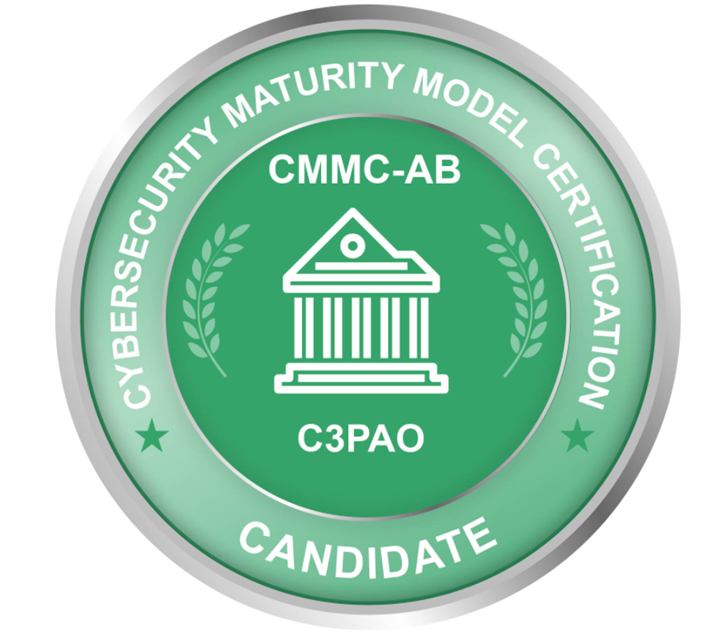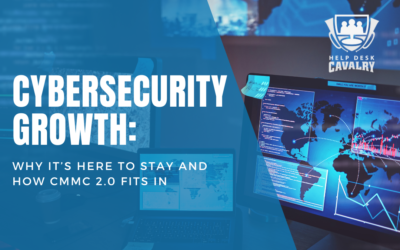Help Desk Cavalry is Your Partner for Securing CMMC 2.0 Compliance
Demystifying CMMC 2.0:
Your Path to Cybersecurity Assurance
In the fast-paced realm of cybersecurity, change is the constant companion. If your organization deals with Federal contracts, you’ve likely heard about the DoD’s latest move – the Cybersecurity Maturity Model Certification Program (CMMC 2.0). CMMC 2.0 was announced in November, 2021, and is now set to be finalized and begin appearing in DoD contracts in 2025. This new framework will redefine how federal contract information (FCI) and controlled unclassified information (CUI) are safeguarded. The effort to become CMMC 2.0 compliant is significant and the time to start your journey towards compliance is now!
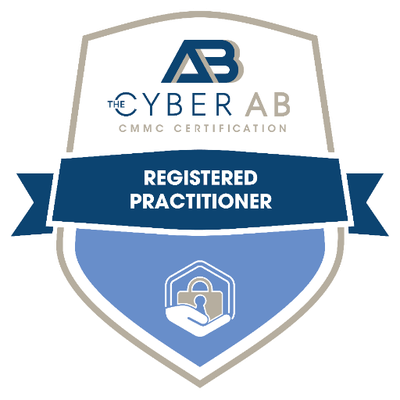

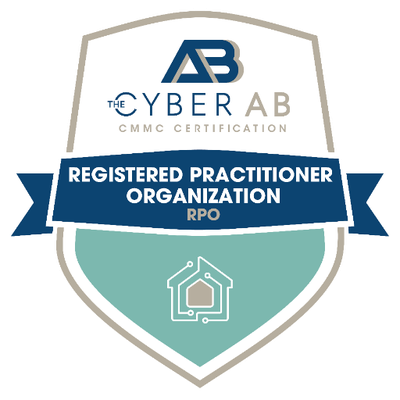
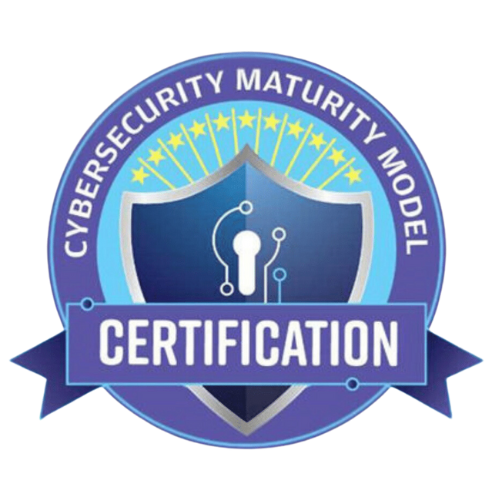
Navigating the Transition and Taking a Proactive Approach
As CMMC 2.0 is codified into law in December 2024, it’s crucial to remember that the 110 requirements linked to NIST 800-171 Rev 2, which have been around for years under the DFARS 7012 clause, will continue to be relevant. This is the perfect time for proactive organizations to roll up their sleeves and address these 110 requirements. Doing so will position you for success when CMMC 2.0 becomes official.
Help Desk Cavalry has established itself as a leader in CMMC 2.0 compliance for defense industrial base (DIB) companies in Kitsap County. We have successfully guided two DIB businesses through the rigorous process to achieve Level 2 compliance, bringing them to the critical stage of third-party audit readiness. Additionally, our expert team is actively assisting numerous other DIB contractors in their journey towards CMMC 2.0 compliance, ensuring they are well-prepared for the upcoming implementation in DoD contracts. We are a Registered Practitioner Organization (RPO) with Registered Practitioners (RPs), CCP (Certified CMMC Professional), and CCA (Certified CMMC Assessor) professionals on staff. You can find us on the Cyber AB marketplace (official accreditation body of CMMC) at this link.
As trusted CMMC advisors and implementors in the region, we are committed to strengthening the cybersecurity posture of Kitsap County’s defense contractors and safeguarding critical information.
Ready to Schedule Your Free CMMC Consult?
Use the form below to provide some background about your organization and preferred time frame for scheduling a call
CMMC 2.0: Simplified Framework Levels
Within the Help Desk Cavalry’s standardized implementation of the CMMC 2.0 framework, a systematic approach to achieving certification is established. The framework encompasses various cybersecurity elements, grouped into 14 domains with over 110 associated practices tailored to each certification level. These certification levels are structured to guide organizations in enhancing their cybersecurity posture, aligning with industry best practices, and meeting specific security requirements based on the type of FCI or CUI contained in the contract.
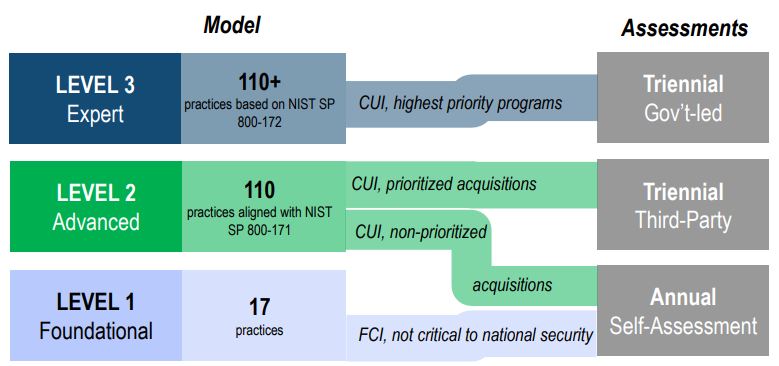
Let’s simplify the information about the certification levels:
Level 1: Basic Cyber Hygiene (17 practices): Organizations exhibit core cybersecurity practices, such as regular password changes for safeguarding sensitive information and the establishment of fundamental policies to address physical security, among other essential procedures.
Level 2: Managed (110 practices): Organizations implement a structured management plan to ensure good cybersecurity hygiene, including compliance with NIST 800-171 r2 security requirements.
Level 3: Advanced (110+ practices): Organizations maintain standardized and optimized processes while incorporating enhanced practices to detect and respond effectively to evolving cyber threats, such as advanced persistent threats (APTs).
Get the Latest News
Cybersecurity Growth: Why It’s Here to Stay and How CMMC 2.0 Fits In
Cybercrime is Reshaping the Global Economy Cybercrime has evolved into one of the most significant threats of our time, so much so that Cybersecurity Ventures reports its economic impact will grow to a staggering $10.5 trillion annually by the end of 2025. If...
CMMC 2.0 Compliance: What Every DoD Contractor Should Be Evaluating Before Starting Compliance
Where Defense Contractors Should Start for CMMC 2.0 As the Cybersecurity Maturity Model Certification (CMMC) continues to reshape the landscape for businesses in the Defense Industrial Base (DIB), proactive preparation is key. But if you’re unsure about what CMMC...
CMMC 2.0 Compliance: Is It Worth the Investment for Your Business?
CMMC 2.0 Compliance: Is It Worth the Investment for Your Business? Hi, I’m David Winn, Certified CMMC Assessor and compliance advocate. As someone who has worked with businesses across the DoD supply chain, I know firsthand how overwhelming CMMC 2.0 compliance can...
Navigating CMMC 2.0 with Our Trusted Partner, ControlCase
At the heart of successful CMMC (Cybersecurity Maturity Model Certification) compliance lies a strong partnership. We are proud to announce our esteemed vendor and partner, ControlCase, who plays a pivotal role in ensuring a seamless transition for our clients on their journey to compliance.
As we continue to stride forward in the world of cybersecurity, it’s essential to have trusted partners by our side. That’s why we, Help Desk Cavalry, have chosen ControlCase to be our guiding light in the realm of CMMC compliance.
We are delighted to announce that ControlCase has earned the prestigious status of being a Candidate for CMMC 3rd Party Assessment Organization (C3PAO) authorization. This significant milestone underscores their unwavering commitment to cybersecurity excellence, positioning them to offer comprehensive CMMC audits to organizations pursuing certification.
In the dynamic realm of cybersecurity, staying up-to-date is paramount. The recent developments in CMMC 2.0, which are detailed on the Acquisition and Sustainment site, reflect the evolving standards and best practices essential for safeguarding federal contract information and controlled unclassified information (CUI). For a more profound exploration of the proposed rule for CMMC 2.0, we extend an invitation to delve into the comprehensive details it provides. This proposed rule serves as a blueprint for the changes and enhancements that will shape the future of CMMC compliance.
We are excited to embark on this journey hand in hand with our trusted partner, ControlCase. Together, we are committed to sharing valuable insights into the ever-evolving world of CMMC compliance, providing expert guidance to our cherished clients. Stay tuned for further updates as we help illuminate your path toward a more secure digital future.
